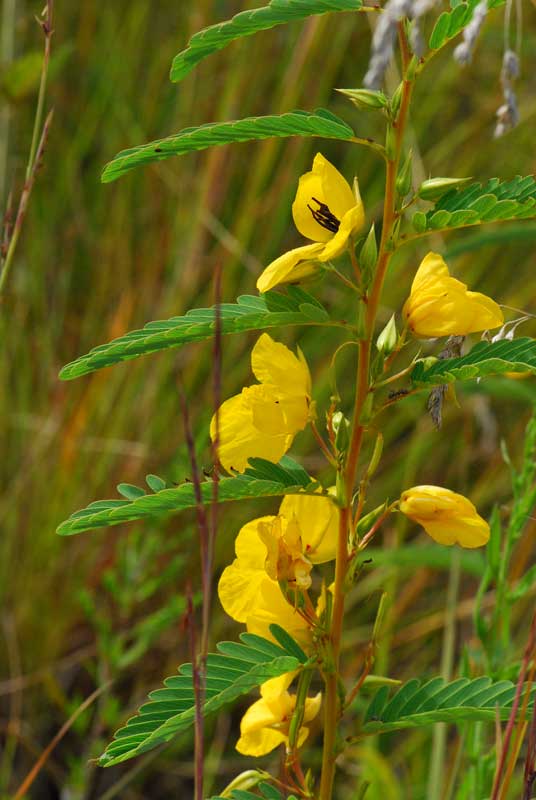Wilmington, NC (28403)
The Middle Atlantic Coastal Plain in southeast North Carolina offers a rich diversity of native plants that can create vibrant, pollinator-friendly gardens. This curated list of 20 native species, ranging from perennial forbs to small trees, provides homeowners in Wilmington with options to support local wildlife while creating an attractive, low-maintenance landscape adapted to the region’s unique coastal environment.

Selection Criteria
The selection criteria for the 20 native plants prioritize species that:
- Offer significant value to pollinators and wildlife by providing food, shelter, or acting as host plants
- Contribute to a diverse and visually appealing garden or landscape with varied bloom times, colors, and textures
- Are relatively low-maintenance and easy to grow for the average home gardener, considering factors such as drought tolerance and adaptability to local soil conditions
- Are typically available at retailers and nurseries who specialize in locally appropriate native plant species
These criteria ensure that the chosen plants not only support the local ecosystem but also create an attractive and manageable landscape.
Perennial Forbs

Perennial forbs are essential components of native gardens in Wilmington, providing long-lasting beauty and ecological benefits. The following list highlights native perennial forbs well-suited to the Middle Atlantic Coastal Plain region, offering a mix of pollinator support, visual appeal, and adaptability to local conditions.
- Butterfly Weed (Asclepias tuberosa) – Vibrant orange flowers attract butterflies and serve as a crucial host plant for monarchs [full sun]
- Purple Coneflower (Echinacea purpurea) – Long-blooming purple flowers attract bees and butterflies, with seed heads providing winter food for birds [full sun, partial sun]
- Black-Eyed Susan (Rudbeckia hirta) – Cheerful yellow flowers bloom throughout summer, supporting pollinators and adding bright color to gardens [full sun]
- Swamp Milkweed (Asclepias incarnata) – Pink flowers attract butterflies and serve as a monarch host plant, thriving in moist soils [full sun, partial sun]
- Joe Pye Weed (Eutrochium fistulosum) – Tall plant with mauve flower clusters that attract butterflies and provide late-season nectar [full sun, partial shade]
- Blue Mistflower (Conoclinium coelestinum) – Fuzzy blue flowers attract butterflies and bloom late into fall [full sun, partial shade]
- Blazing Star (Liatris spicata) – Tall spikes of purple flowers attract butterflies and hummingbirds [full sun]
- Seaside Goldenrod (Solidago sempervirens) – Late-blooming yellow flowers support fall pollinators and tolerate salt spray [full sun]
These perennial forbs offer a diverse range of colors, bloom times, and growth habits, providing year-round interest and ecological value to Wilmington gardens. They are well-adapted to the coastal environment, with many tolerating sandy soils and periodic drought conditions common in the region.
Annual Forbs

Annual forbs provide vibrant color and attract pollinators to Wilmington gardens, often reseeding themselves for continued enjoyment. Here’s a selection of native annual forbs well-suited to the Middle Atlantic Coastal Plain region:
- Partridge Pea (Chamaecrista fasciculata) – Yellow flowers attract bees and butterflies, with seeds providing food for birds and small mammals [full sun]
- Blanketflower (Gaillardia pulchella) – Daisy-like flowers in red, orange, and yellow bloom throughout summer, attracting butterflies and bees [full sun]
- Clasping Coneflower (Dracopis amplexicaulis) – Yellow flowers with dark centers bloom from late spring to early fall, supporting pollinators [full sun]
- Spotted Beebalm (Monarda punctata) – Unique tiered flowers attract bees, butterflies, and hummingbirds, tolerant of poor soils [full sun, partial shade]
These annual forbs are easy to grow from seed, providing quick color and ecological benefits to Wilmington gardens. They thrive in the coastal environment, often tolerating sandy soils and hot summers characteristic of the region.
Native Grasses

Native grasses play a crucial role in Wilmington landscapes, providing texture, movement, and habitat for wildlife. Here’s a selection of native grasses well-suited to the Middle Atlantic Coastal Plain region:
- Switchgrass (Panicum virgatum) – Tall, upright grass with airy seed heads, providing food and shelter for birds [full sun]
- Little Bluestem (Schizachyrium scoparium) – Compact grass with blue-green foliage turning reddish in fall, supporting various insects and birds [full sun]
- Purple Lovegrass (Eragrostis spectabilis) – Low-growing grass with delicate purple flower panicles, attracting butterflies and small birds [full sun]
- Muhly Grass (Muhlenbergia capillaris) – Produces stunning pink-purple plumes in fall, tolerant of coastal conditions [full sun]
These native grasses are adaptable to various soil types, drought-tolerant once established, and provide year-round interest in Wilmington gardens. They offer crucial habitat for insects and birds while adding movement and texture to the landscape.
Shrubs and Small Trees

Native shrubs and small trees provide structure, habitat, and year-round interest in Wilmington gardens. The following list highlights species well-adapted to the Middle Atlantic Coastal Plain, offering benefits to wildlife and aesthetic value to landscapes:
- Wax Myrtle (Morella cerifera) – Evergreen shrub with fragrant leaves, berries for birds [full sun, partial shade]
- Yaupon Holly (Ilex vomitoria) – Evergreen shrub with red berries, important winter food for birds [full sun, partial shade]
- Beautyberry (Callicarpa americana) – Deciduous shrub with striking purple berries in fall [partial shade, full sun]
- Inkberry (Ilex glabra) – Evergreen shrub with black berries, good for hedges [full sun, partial shade]
- Red Chokeberry (Aronia arbutifolia) – Deciduous shrub with white spring flowers and red fall berries [full sun, partial shade]
- Sweet Pepperbush (Clethra alnifolia) – Fragrant white flowers in summer, attracts butterflies [partial shade, full sun]
- Elderberry (Sambucus canadensis) – Large shrub with edible berries, supports birds and pollinators [full sun, partial shade]
- Fringetree (Chionanthus virginicus) – Small tree with fragrant white flowers in spring [full sun, partial shade]
These native shrubs and small trees are adapted to coastal conditions, providing food and shelter for wildlife while adding structure and seasonal interest to Wilmington gardens.
